Robert Eugene Bush and The Battle of Okinawa

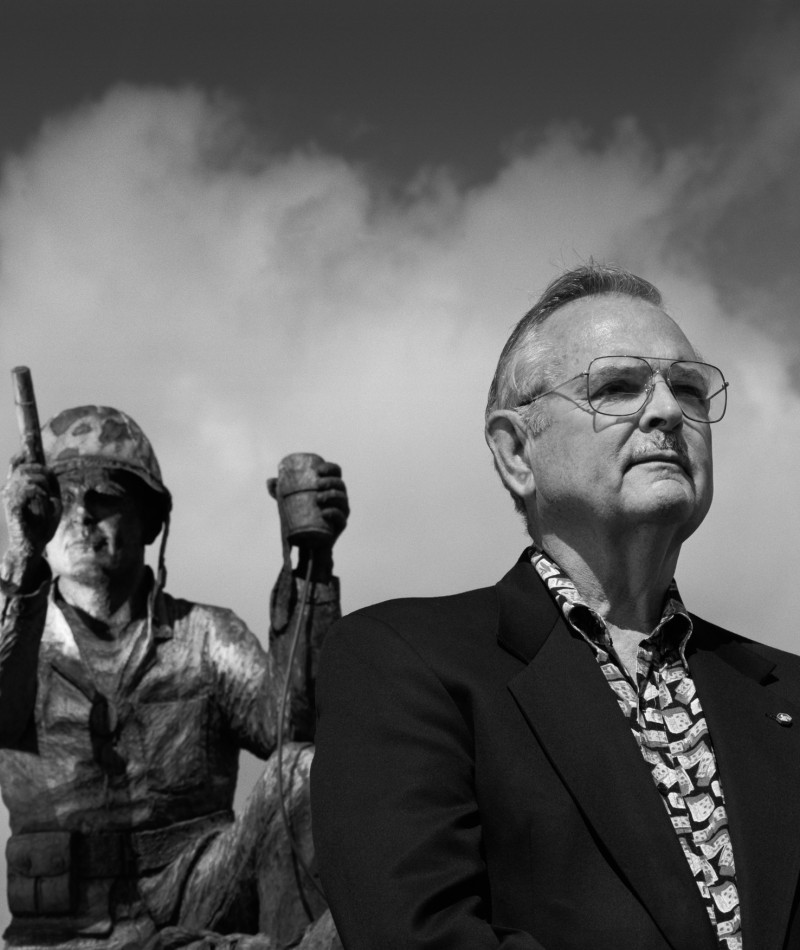
Official Medal of Honor Citation:
“For conspicuous gallantry and intrepidity at the risk of life above and beyond the call of duty while serving as medical corpsman with a rifle company, in action against enemy Japanese forces on Okinawa Jima, Ryukyu Islands, 2 May 1945. Fearlessly braving the fury of artillery, mortar, and machine-gun fire from strongly entrenched hostile positions, Bush constantly and unhesitatingly moved from one casualty to another to attend the wounded falling under the enemy’s murderous barrages. As the attack passed over a ridge top, Bush was advancing to administer blood plasma to a marine officer lying wounded on the skyline when the Japanese launched a savage counterattack. In this perilously exposed position, he resolutely maintained the flow of lifegiving plasma. With the bottle held high in one hand, Bush drew his pistol with the other and fired into the enemy ranks until his ammunition was expended. Quickly seizing a discarded carbine, he trained his fire on the Japanese charging point-blank over the hill, accounting for six of the enemy despite his own serious wounds and the loss of one eye suffered during his desperate battle in defense of the helpless man. With the hostile force finally routed, he calmly disregarded his own critical condition to complete his mission, valiantly refusing medical treatment for himself until his officer patient had been evacuated, and collapsing only after attempting to walk to the battle aid station. His daring initiative, great personal valor, and heroic spirit of self-sacrifice in service of others reflect great credit upon Bush and enhance the finest traditions of the U.S. Naval Service.”
On October 5, 1945, President Harry S. Truman awarded Hospital Apprentice First Class Robert Eugene Bush the Congressional Medal of Honor for his valiant efforts to medically tend to his platoon at the Battle of Okinawa on May 2, 1945.
When the Imperial Japanese Navy launched an attack on Pearl Harbor in December 1941, Bush was just 15 years old. Eager to become involved, Bush and a fellow classmate dropped out of high school in the fall of 1943 to enlist in the U.S. Navy. Bush adds, “We just wanted to be part of it,” he said. “A little of it was adventurous, but the rest of it was to get even.” Little did he or we know, this would foreshadow his military accomplishments and career.
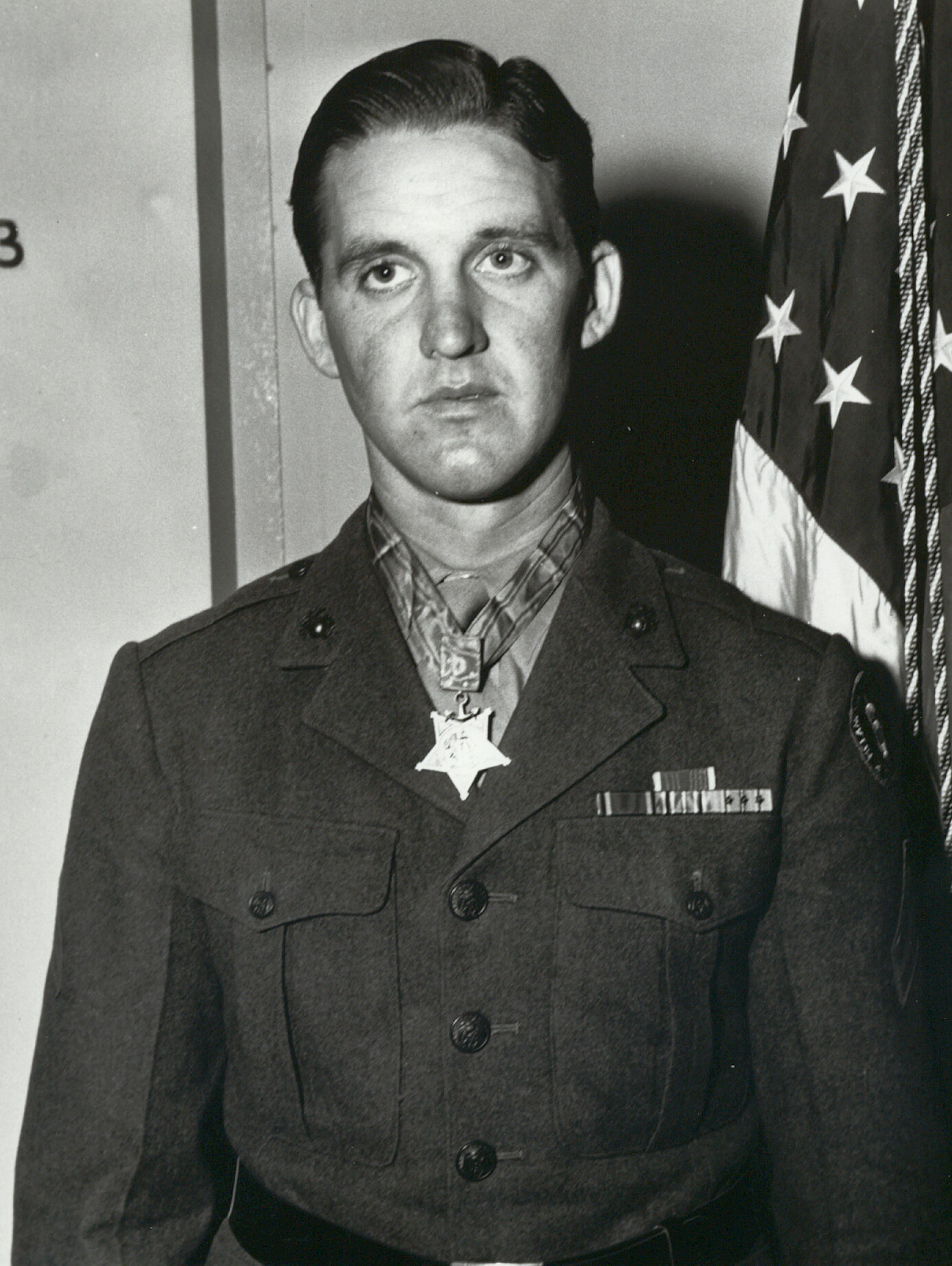
Bush had grown up in hospitals, as his single mother was a nurse in their hometown. Bush knew he would end up in the medical field in some capacity. Upon enlisting in the Navy and his successful completion of basic training, Bush signed up to be a Navy Corpsman, which are tasked with providing medical aid in the battle field. Bush knew he would work in the medical field someday, so when he learned about the Navy Corpsman, he knew it was the perfect job for him.
Four months later, following combat and medical training, Bush found himself serving in the Pacific. After preparing for the presumed invasion of Formosa, Bush was stationed on a landing ship, tank, with 500 Marines near Iwo Jima, which recently fell under U.S. control. His ship was one of 1700 that planned to land on the island.

“It gave you a certain amount of confidence…there was an innumerable amount of ships and landing craft, so we thought this would be a piece of cake,” Bush recalls. When arriving on the island, there wasn’t a soul in site. Japanese plans were still grounded and the beaches were free of traps and debris. This was only the beginning of one of the bloodiest battles in Japan in World War II.
In a turn of events, half of the 58-man platoon that had accompanied Bush had perished by the time they reached Shuri Castle. This was 32 days after Bush had touched ground on the island. Shuri Castle was one of the most brutal battle lines on Okinawa, and many soldiers wondered if they would make it out alive. An even deadlier front line, Kunishi Ridge, was where Bush and the rest of his platoon were assigned to take next. The U.S. Army had made several advances on this ridge within 3 weeks without success.
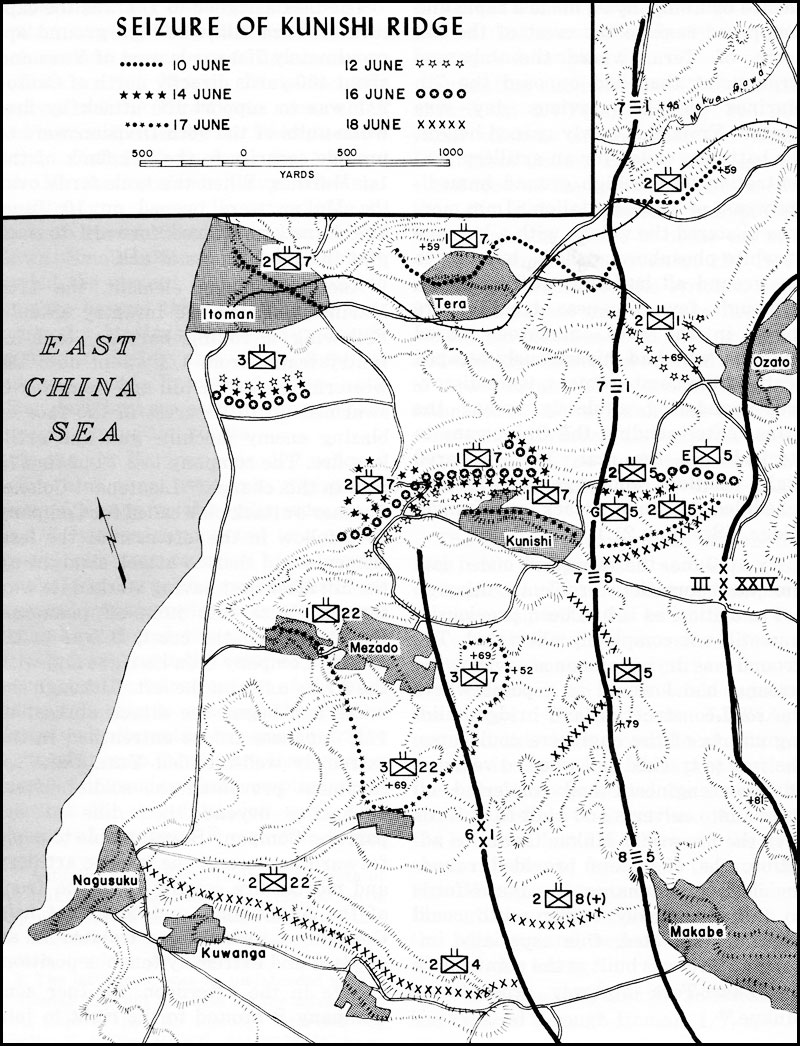
Jim Roach, the platoon leader in which Bush served, advanced and encountered Japanese forces and was quickly wounded. Although Bush was advised to avoid any situations that would disable him from completing his job as a corpsman, Bush knew how important it was to save Roach, and relied on his tenants of survival and revenge. Bush requested to be accompanied by two Marines: one in front of him and another behind him to protect him from enemy forces as he moved along the ridge. Both perished by the time Bush reached Roach.
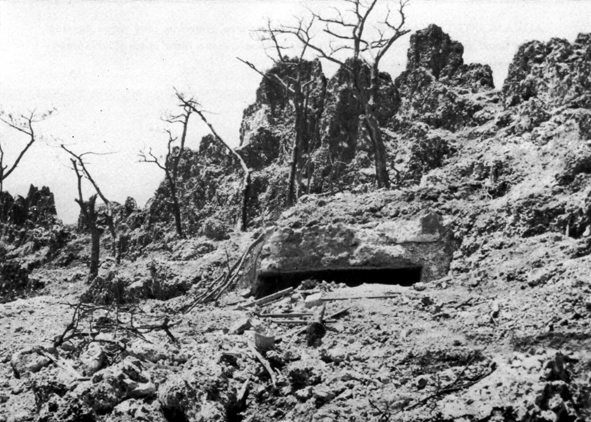
As Bush began to give plasma blood to roach, he noticed a barrage of Japanese forces on the ridge. While still infusing blood, Bush grabbed Roach’s rifle and began to fire shots.
Bush asked another Marine to escort him back to base camp. As they were leaving, a Japanese hand grenade landed and exploded next to Bush, taking out his right eye. This was followed by two additional hand grenades that severely wounded Bush.
Rather than moving back to base camp, Bush became enraged and headed up the hill towards the enemy soldiers with two guns he had collected from fallen Marines. After taking out the Japanese soldiers that threw the three bombs, Bush, bloodied and blinded, attempted to reach an aid station before collapsing.
Bush was awarded the Congressional Medal of Honor for these feats in October 1945. At age 18, Bush was the youngest person to ever receive the award.
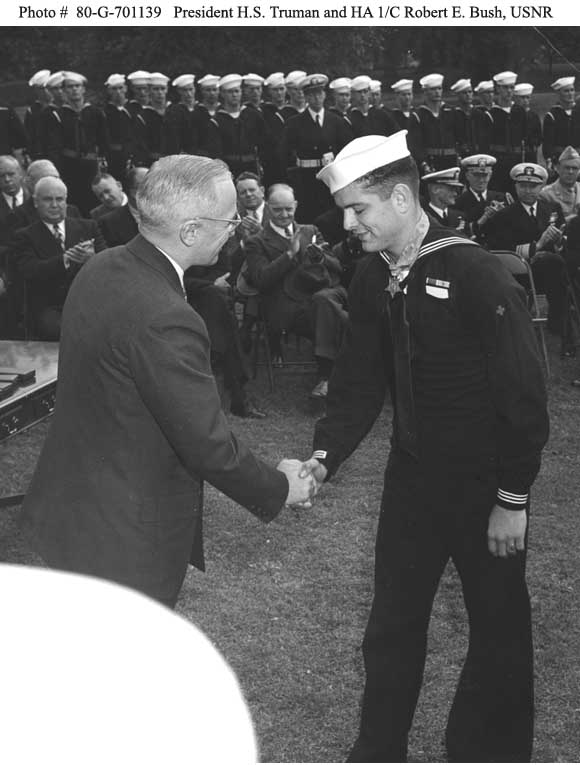
Today, outside of the Robert E. Bush Naval Hospital in Twentynine Palms, California, there stands a statue depicting the moment that earned Bush the Congressional Medal of Honor. Bush is seen firing shots while holding the blood being infused into Roach.
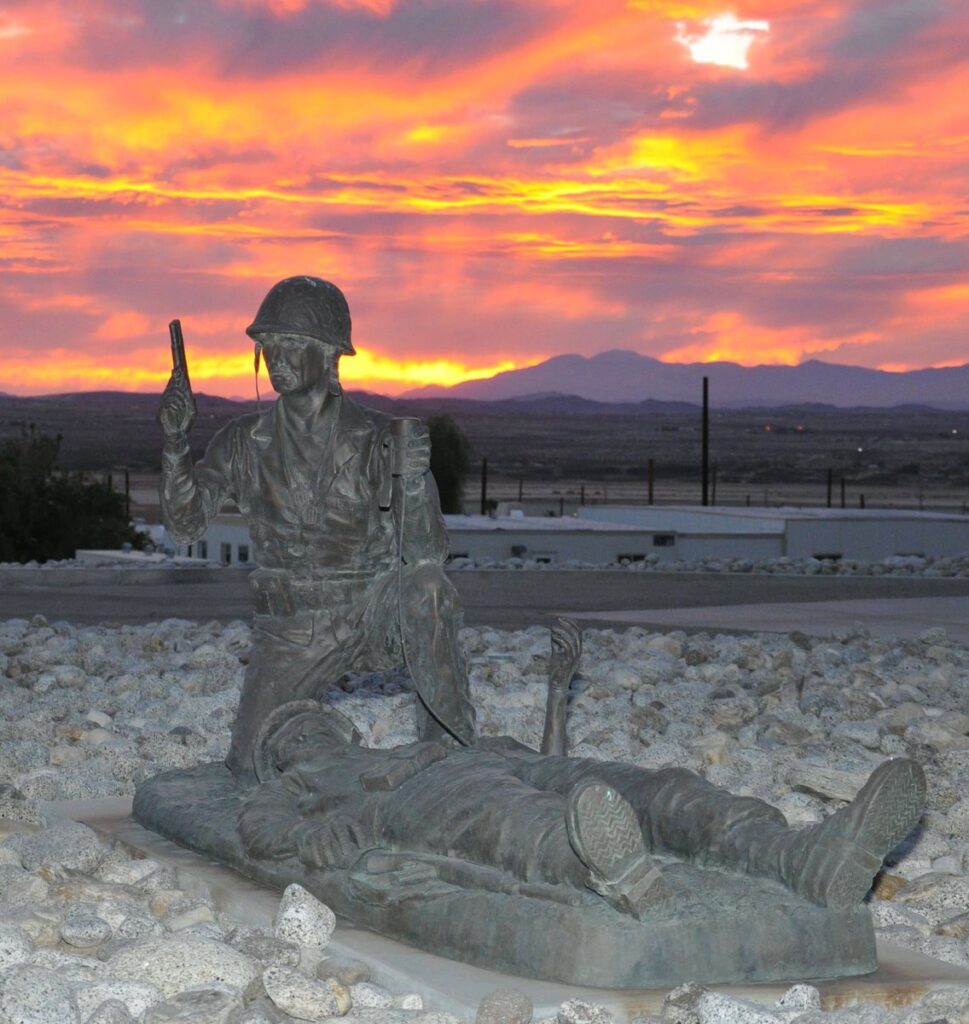
After receiving the Congressional Medal of Honor, Bush went to study Business at the University of Washington. He used this education to found the Bayview Lumber Company and the Bayview Redi-Mix which added “millionaire” to his list of accomplishments. He served as the President of the Congressional Medal of Honor Society from 1971 to 1973 and attended every inauguration with the exception of Lyndon B. Johnson.
Robert Eugene Bush passed away on November 8, 2005, in Olympia, Washington, after a battle with kidney cancer. Bush’s contribution to both the military and the medical field will live on forever.
Citations:
Alexander, Joseph. “The Final Campaign: Marines in the Victory on Okinawa (Closing the Loop).” National Parks Service, n.d. https://www.nps.gov/parkhistory/online_books/npswapa/extcontent/usmc/pcn-190-003135-00/sec6a.htm.
“Chapter XV: The Fall of Shuri.” Chapter XV: The fall of shuri, December 10, 2001. https://history.army.mil/books/wwii/okinawa/chapter15.htm.
“Chapter XVII: The Enemy’s Last Stand.” U.S. Army History, December 10, 2001. https://history.army.mil/books/wwii/okinawa/chapter17.htm.
Chron Contributor. “What Do Navy Corpsmen Do?” Work, April 13, 2021. https://work.chron.com/navy-corpsmen-do-23271.html.
Erickson, Monica. “U.S. Marine Corps Photo.” Twentynine Palms, November 5, 2008. https://www.29palms.marines.mil/News/Photos/igphoto/158909/.
“Hospital Apprentice First Class Robert E. Bush, USNR, (1926-2005).” US people–Bush, Robert E., Hospital Apprentice First Class, USNR, May 29, 2008. https://www.ibiblio.org/hyperwar/OnlineLibrary/photos/pers-us/uspers-b/r-bush.htm.
“HOSPITAL APPRENTICE FIRST CLASS ROBERT EUGENE BUSH, USNR (DECEASED) .” Marine Corps University, n.d. https://www.usmcu.edu/Research/Marine-Corps-History-Division/People/Whos-Who-in-Marine-Corps-History/Abrell-Cushman/Hospital-Apprentice-First-Class-Robert-Eugene-Bush/.
Muxen, Evan. “7ID and Operation Iceberg: It All Began with the Invasion of Okinawa on April 1, 1945.” U.S. Army, April 1, 2022. https://www.army.mil/article/255269/7id_and_operation_iceberg_it_all_began_with_the_invasion_of_okinawa_on_april_1_1945.
“Po3 Robert Eugene Bush, U.S. Navy (1944–1945).” TogetherWeServed Blog, n.d. https://blog.togetherweserved.com/2023/01/13/navy-corpsman-robert-e-bush-1944-1945/.
“Robert Eugene Bush Collection.” The Library of Congress, May 17, 2004. https://www.loc.gov/item/afc2001001.18603/.
“Robert Eugene Bush.” Wikipedia, October 10, 2022. https://en.wikipedia.org/wiki/Robert_Eugene_Bush.
“Robert Eugene Bush: World War II: U.S. Naval Reserve Force: Medal of Honor Recipient.” Congressional Medal of Honor Society, n.d. https://www.cmohs.org/recipients/robert-e-bush.
Shaw, Frank. “ON TO KUNISHI RIDGE.” Hyperwar: USMC operations in WWII: Vol V–victory and occupation [Chapter II-10], n.d. https://www.ibiblio.org/hyperwar/USMC/V/USMC-V-II-10.html.
